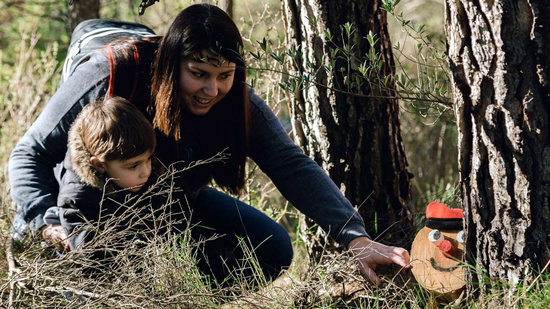Move over Santa Claus, the Tió de Nadal rules in Catalonia
Catalan tradition dictates that a pooping log delivers children their presents

We all know the story, on the night of December 24, Santa Claus, accompanied by some very helpful reindeer friends, makes his way around the world on his sleigh dropping presents off in good children’s houses, whilst leaving some coal around the way for those who were not well behaved.
Now this may be true in many Anglophone countries, however, here in Catalonia, Santa has decided to let the caga tió, literally the pooping log, do his job.
So, how does one get themselves presents from this magical log? Well, first the caga tió, which is also called tió de nadal, is set up in the family home at the start of December, wearing his attire of a traditional red hat and a smiling painted face.
Obviously, for the tió to poop out presents it must be fed. From the day of the Feast of the Immaculate Conception (December 8), children are encouraged to feed the log a little everyday, to keep the tió well stuffed.
Good care must be taken of the tió, and children will cover him with a blanket to make sure he does not get chilly during the winter month.
The interesting part (read: when presents are received) happens on Christmas Day or Christmas Eve. After a long month of gorging on free food, the tió is ready to poop. To give it a helping hand, Catalan kids grab a stick and whack the tió whilst singing a special song.
Following this, the tió’s blanket is lifted and sweets are revealed. What Catalan children are hoping for is turró: a sweet Christmas concoction usually made of nougat and almonds, which is well known as a special sweet for the festive season.
Where does the tradition come from?
The unique tradition of this smiling pooping log finds its origins in pagan rituals. As many of our festive customs, it derives from a celebration of the Winter Solstice.
At the beginning of winter it was usual for people in rural villages to gather a tree trunk that they would use to burn for the duration of the season, which was called the Tió de Nadal.
This burning is the reason why some Catalan families continue to (put the log) in the fireplace, rather than hitting it, to receive presents.
Now instead of the gift of warmth, Tió de Nadal gives back to families the gift of delicious turón.
What else is different about Catalan Christmas?
Not only are the gift delivery methods focused on poo, but you need look no further than the 'caganer', for another pooping tradition. The figurine of a peasant in the traditional red Catalan hat known as the 'barretina', with his trousers around his ankles and mooning while he relieves himself of yesterday's dinner.
Talking of dinner, the Christmas meal is also done differently in Catalonia. Although Christmas Eve usually comprises a roast (most likely lamb), on Christmas Day, Catalans eat many courses, the main one being ‘sopa de galets’, a meat and vegetable broth accompanied with large pasta shells. The next day on Sant Esteve leftovers are served in ‘canelons’ a form of filled pasta.
The festive season finishes with Three Kings Day on January 6 where presents are received and a pie or ‘rosco’ is shared.
In the pie there is a hidden figurine and a ‘fava’. If you win the figurine, you are king for the day but for the unlucky fava finder, they will have to pay the price of the pie.